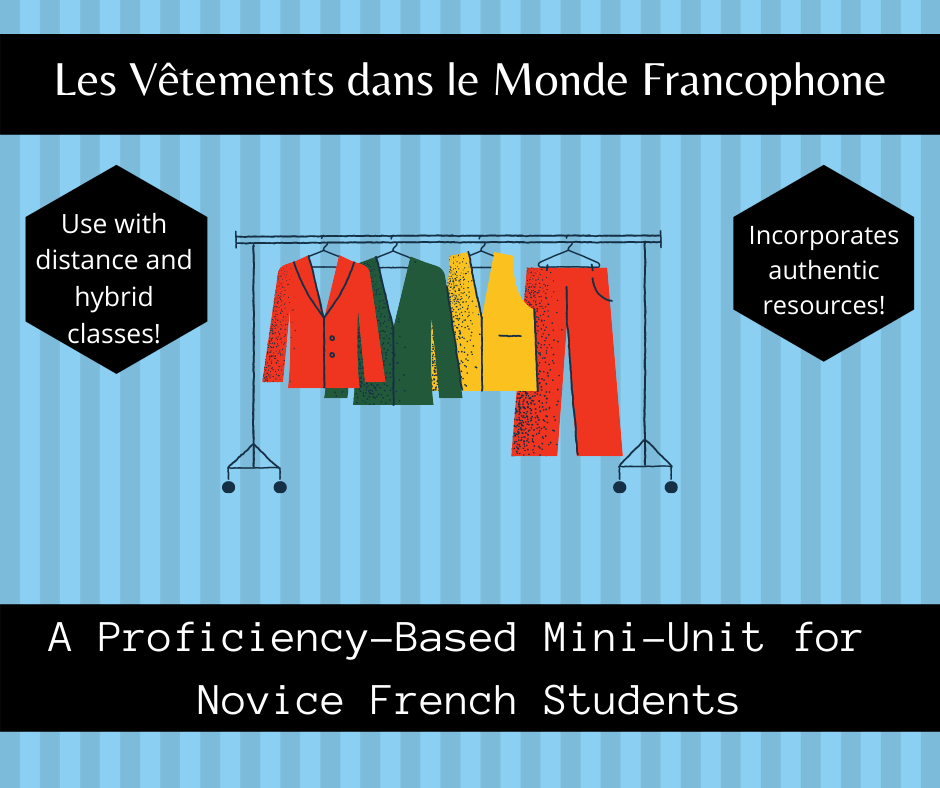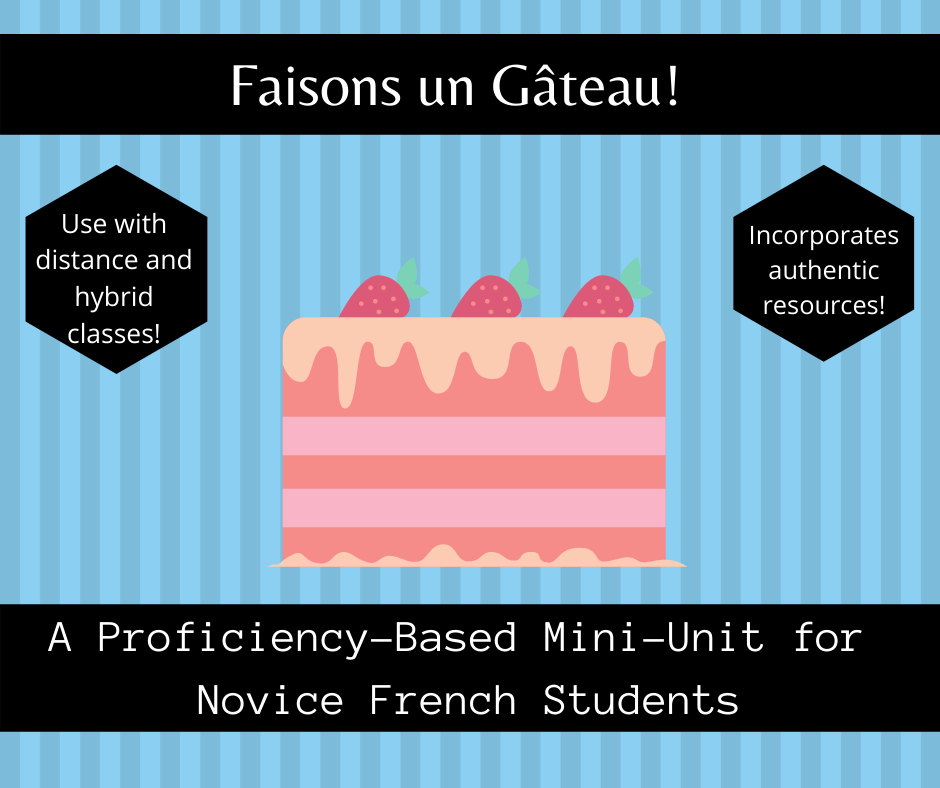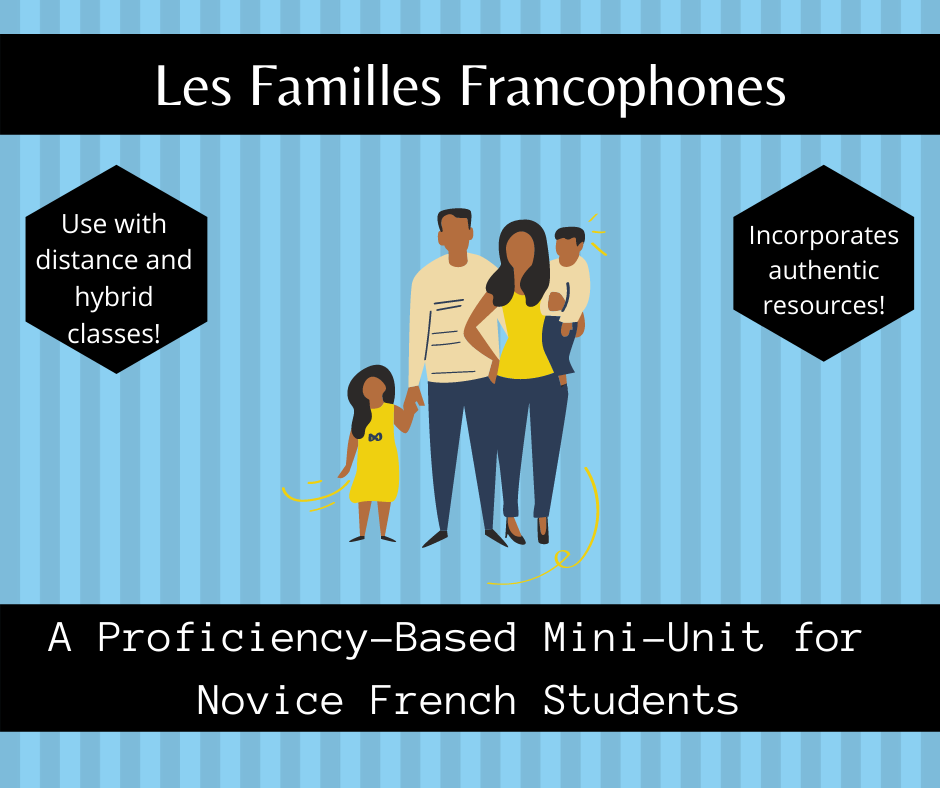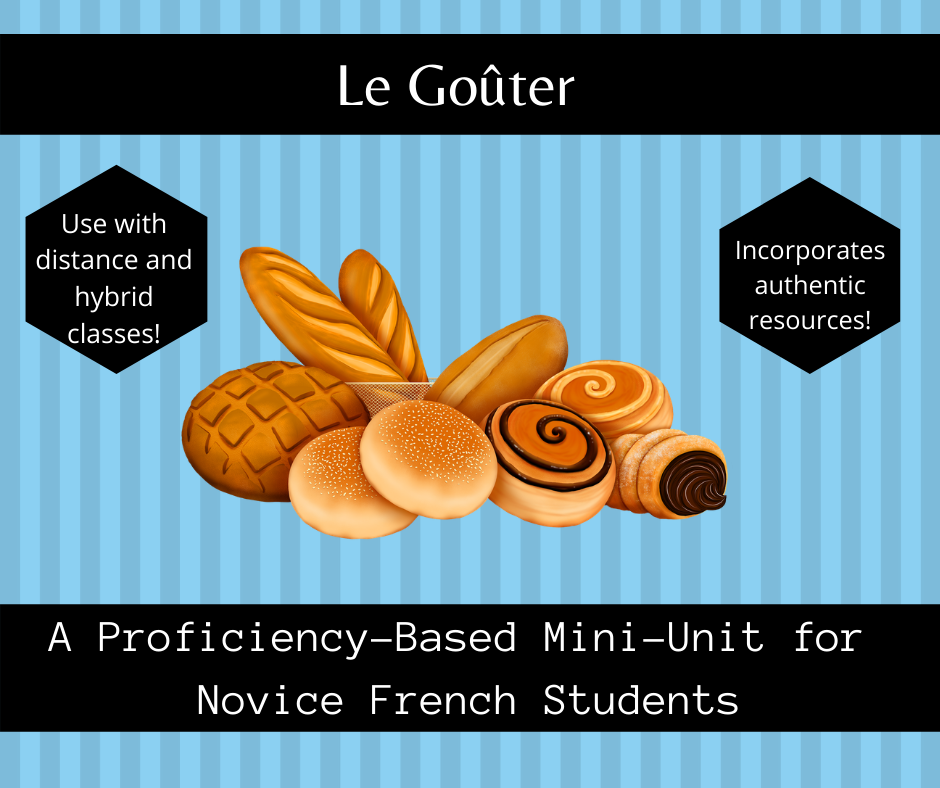
I have to admit that I was never a huge fan of projects when I was in the classroom. There were several reasons for this. The first was that the class time spent on research and preparing a presentation took time away from the types of communicative tasks that I felt would lead to progress toward proficiency. Of course my upper level students could do research in the target language, but it was very difficult to ensure that they did. Likewise, although I could have had the students prepare their visual aid at home, I found that some students would not prepare anything and others spent an inordinate amount of time making something pretty that did not in any way reflect their ability to communicate in French. This created a real dilemma for me, as my grading system was designed to reflect language proficiency rather than workmanship, effort, artistic talent, etc.
Finally, I questioned the value of having students, especially Novices, present in French. Because their ideas (many of which came from research in English) were incongruous with their language proficiency, their presentations often involved reading Google-translated text aloud. It is hard to say whether listening to this type of presentation was more painful to me, the presenter or to their classmates, who didn’t understand a word of the language they heard.
Of course there are many advantages to assigning projects, too. In fact, there are rockstar language teachers out there who have designed entire curriculums around project-based learning and their students are speeding down the path to proficiency. Other esteemed colleagues are designing fabulous projects that motivate their students, provide opportunities for independent learning and will be remembered fondly by their students for the rest of their lives. I applaud all of you!!!!
As for me, in spite of the previously-mentioned challenges, I did find myself assigning projects from time to time. While I was not able to resolve all of the issues I mentioned above, some students did learn both language skills and content knowledge from their projects and I benefited from having a few days in a row that did not require a detailed lesson plan. This was important to me then and it would be even more vital if I were teaching via remote, hybrid or socially-distanced face-to-face learning, which is why I recently found myself designing a new project.
As I mentioned in a previous post, I have begun creating mini-units based on some of my favorite Troto episodes. Each mini-unit includes several communicative activities based on the cartoon and then a series of extension activities designed to develop the students’ vocabulary and cultural competence on a topic related to the episode. Because I had selected Trotro s’habille for my most recent mini-unit, I decided to focus on introducing students to clothing in non-European regions of the Francophone world. After all, as cute as Trotro is, a diet of donkey cartoons alone is not going to introduce students to the diverse and fascinating cultures that make up La Francophonie. (Although they’re a great way to provide comprehensible input and a context for communicative tasks!)
Of course, there were some challenges inherent in introducing this topic. Even Novice High/French 2 students would struggle on most authentic texts relating to clothing styles and with so many French-speaking regions in the world, there was no way I could introduce them all. Fortunately, I found an infographic on clothing in Africa that I thought would be at least partially comprehensible at this level and was able to use it to create an interpretive task that was appropriate for Novice High students. This seemed like a pretty good start, but I wanted to provide students with exposure to additional cultures (I used only the Francophone African countries in the infographic on my interpretive task.) and to provide the teachers with additional lesson plans in the mini-unit. It seemed like it was time for a project.
As you can see in this project guide, the project I designed is highly-scaffolded will hopefully prevent many of the pitfalls I identified from previous projects. The first step of the project will be for the students to select the article of clothing that they would like to research. They will fill their names in on the sign-up list (provided) and then begin researching. Unfortunately, in spite of the many hours I spent researching traditional clothing around the world, I was not able to find comprehensible authentic texts for the majority of the clothing items. Therefore, I would invite students to research in English, or use our frenemy Google Translate to find out some basic details about the article of clothing they have selected. As you will see on the sign-up list, I did curate one or more authentic texts for each topic that could give the students something to translate or could be used by teachers of upper level students who would like to assign a more in-depth project to their students.
After researching a few basic details about their garment, the students will prepare a script for their presentation. In order to discourage the use of an electronic translator for this portion, I have provided sentence fragments that the students can use to write their scripts. I have then directed students to create a visual aid, but intend for teachers to expand on these directions based on their own expectations. For example, you may or may not allow the students to have text on their slides or to use notecards. Lastly, you’ll find a rubric for the presentation itself and a document that the audience members can use to take notes on the presentations. I think this will help keep their attention and make it more likely that they retain some cultural knowledge.
I hope that this project might be helpful for some of your clothing units and would be grateful for your feedback. If you’d like to access the rest of the mini-unit, it’s available here.





